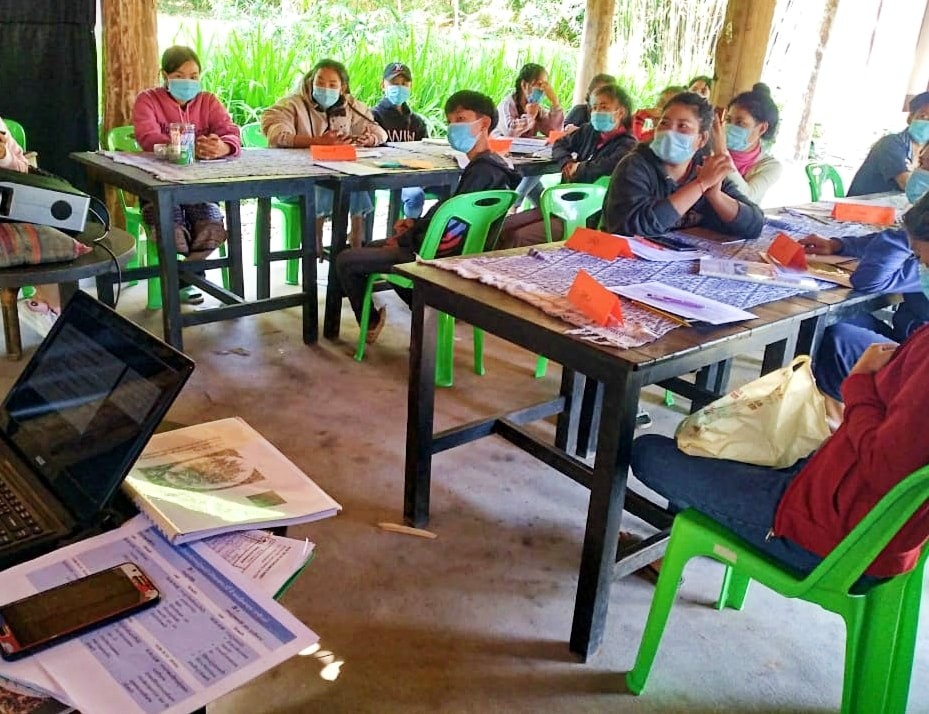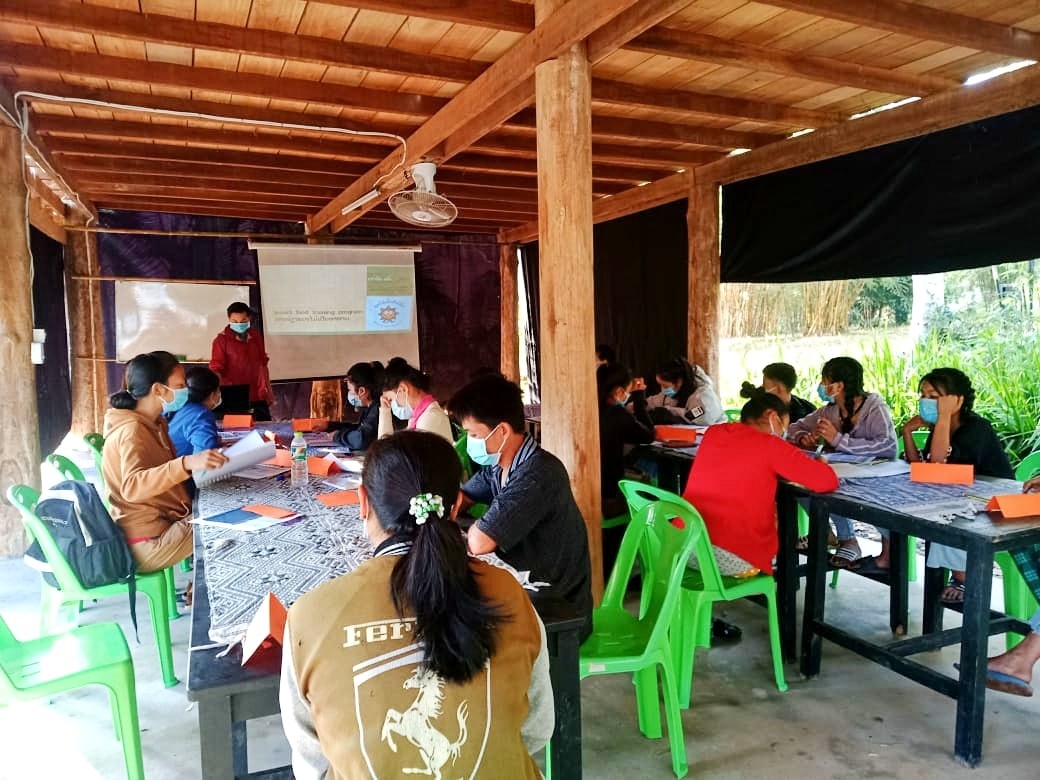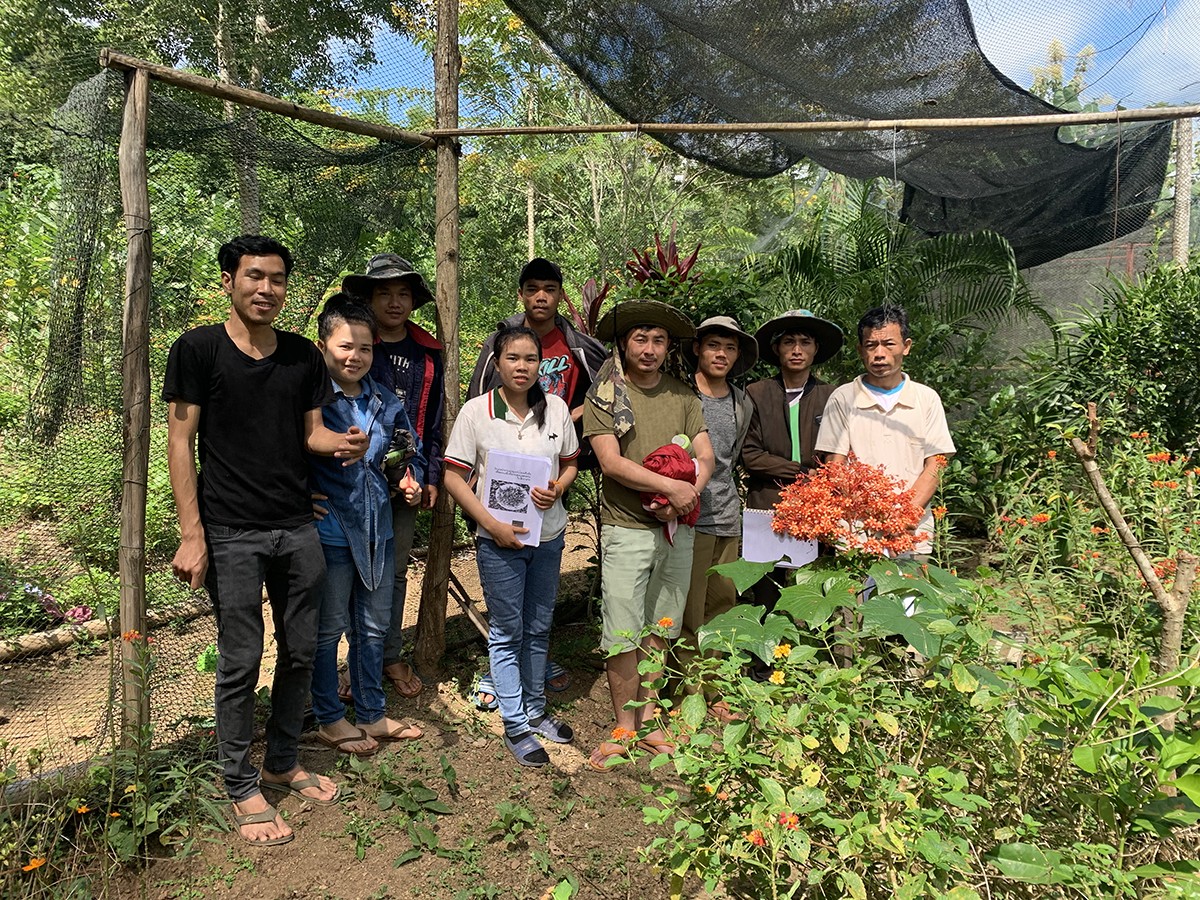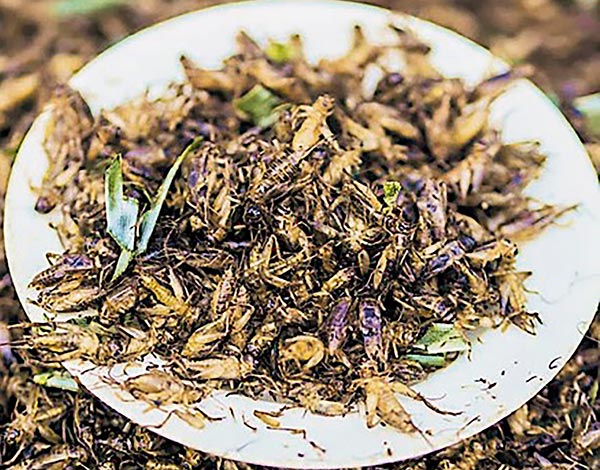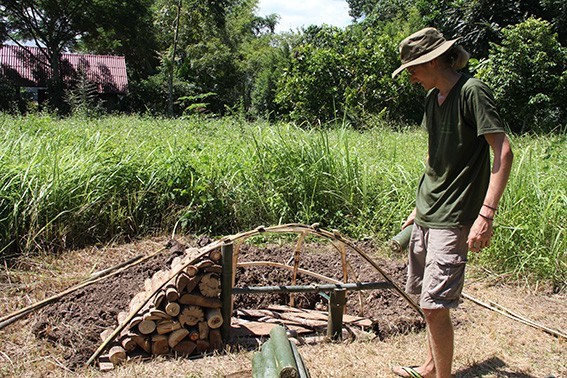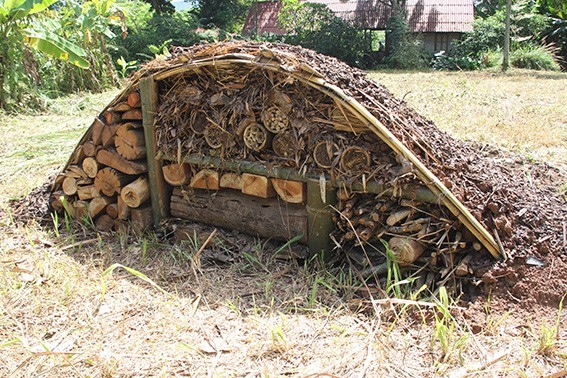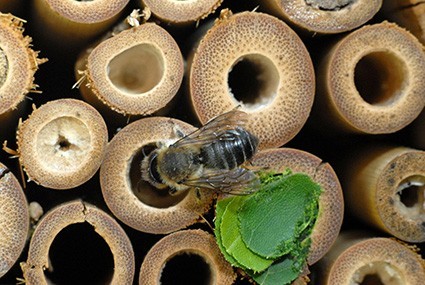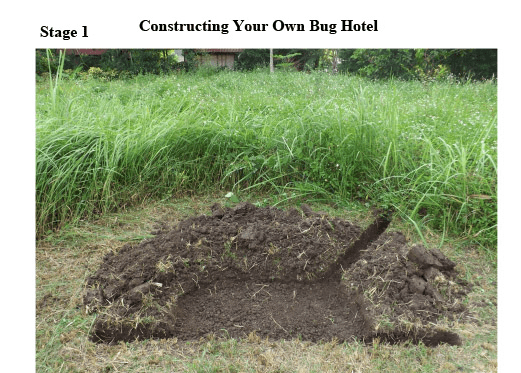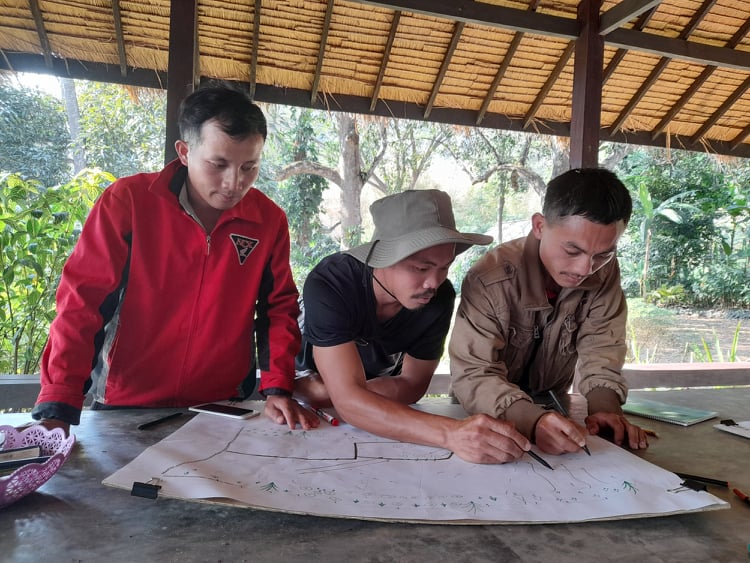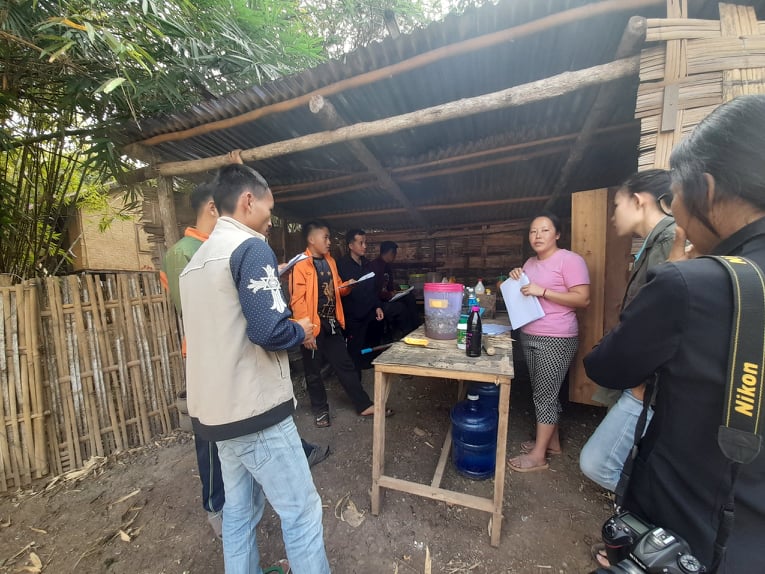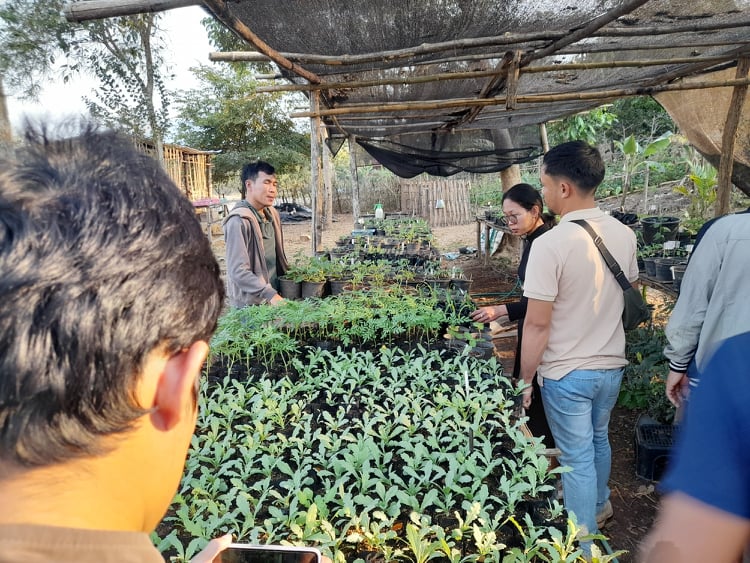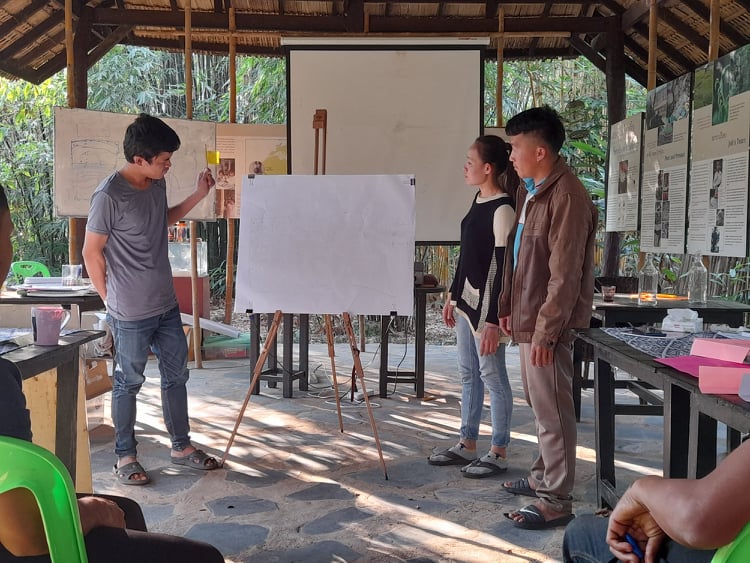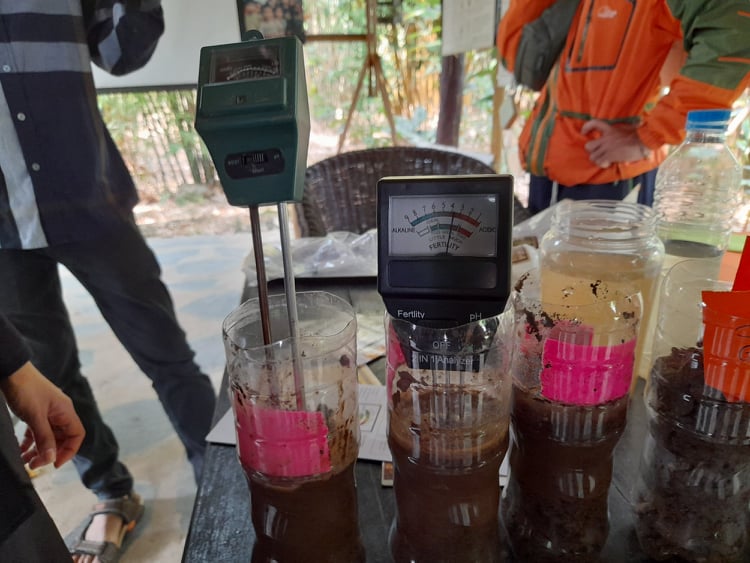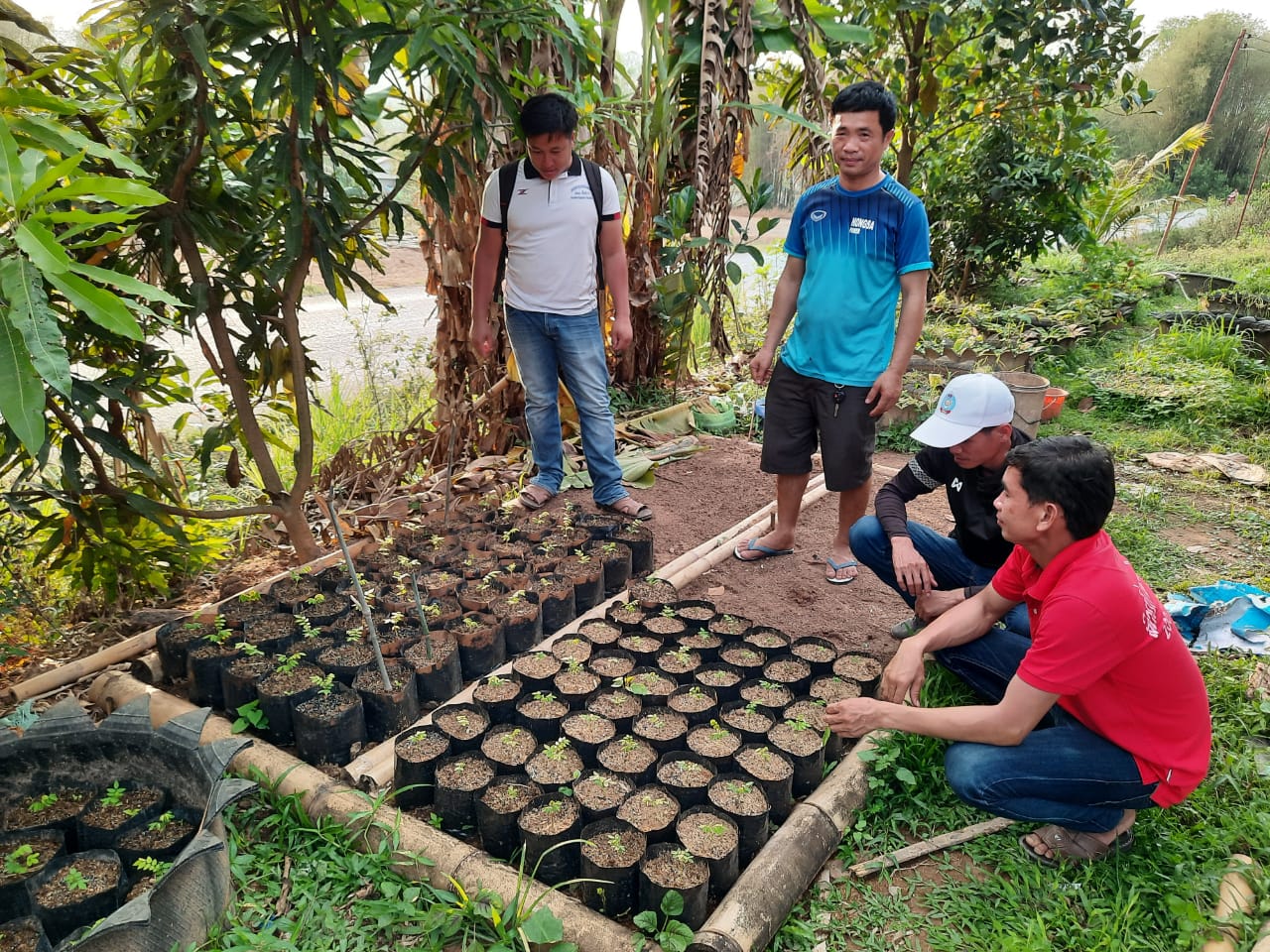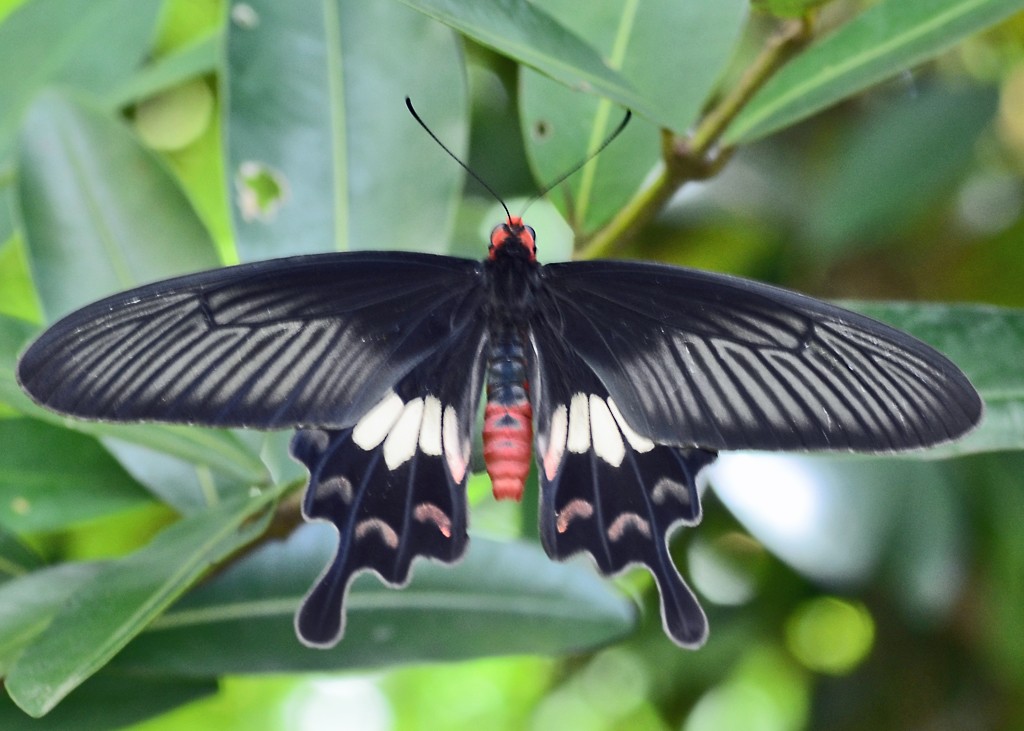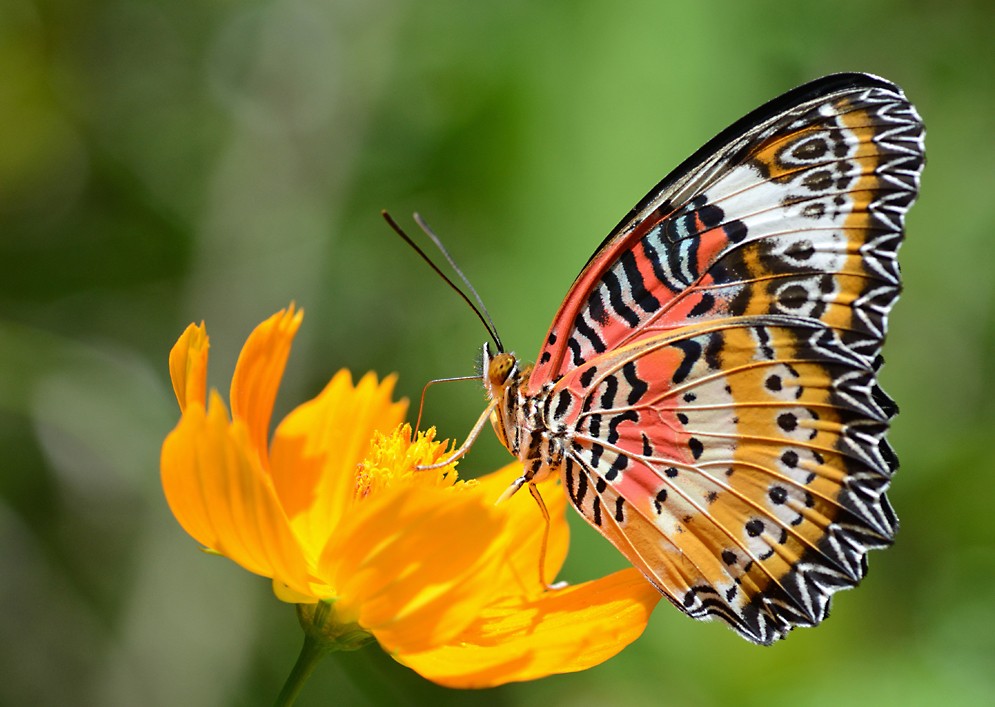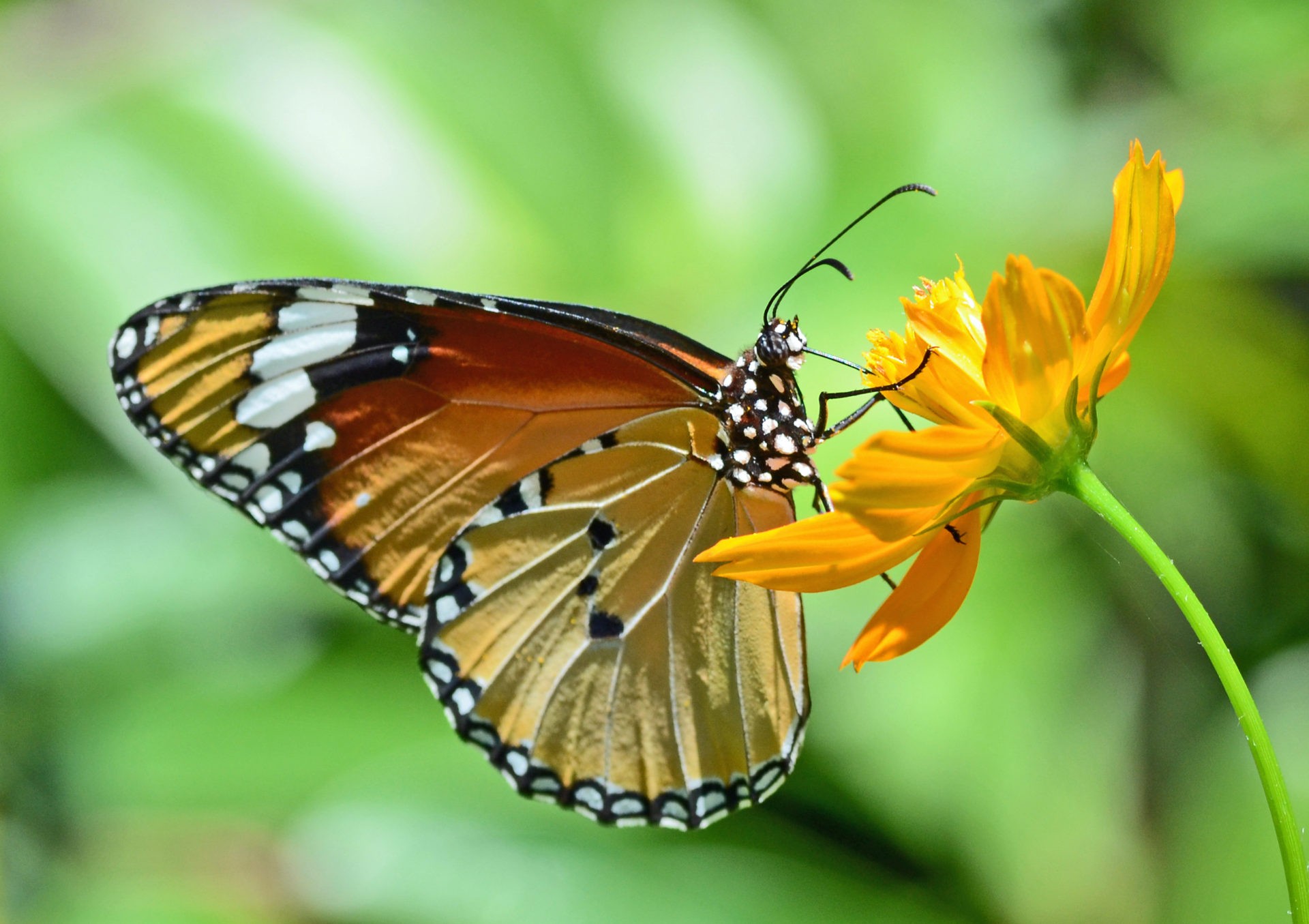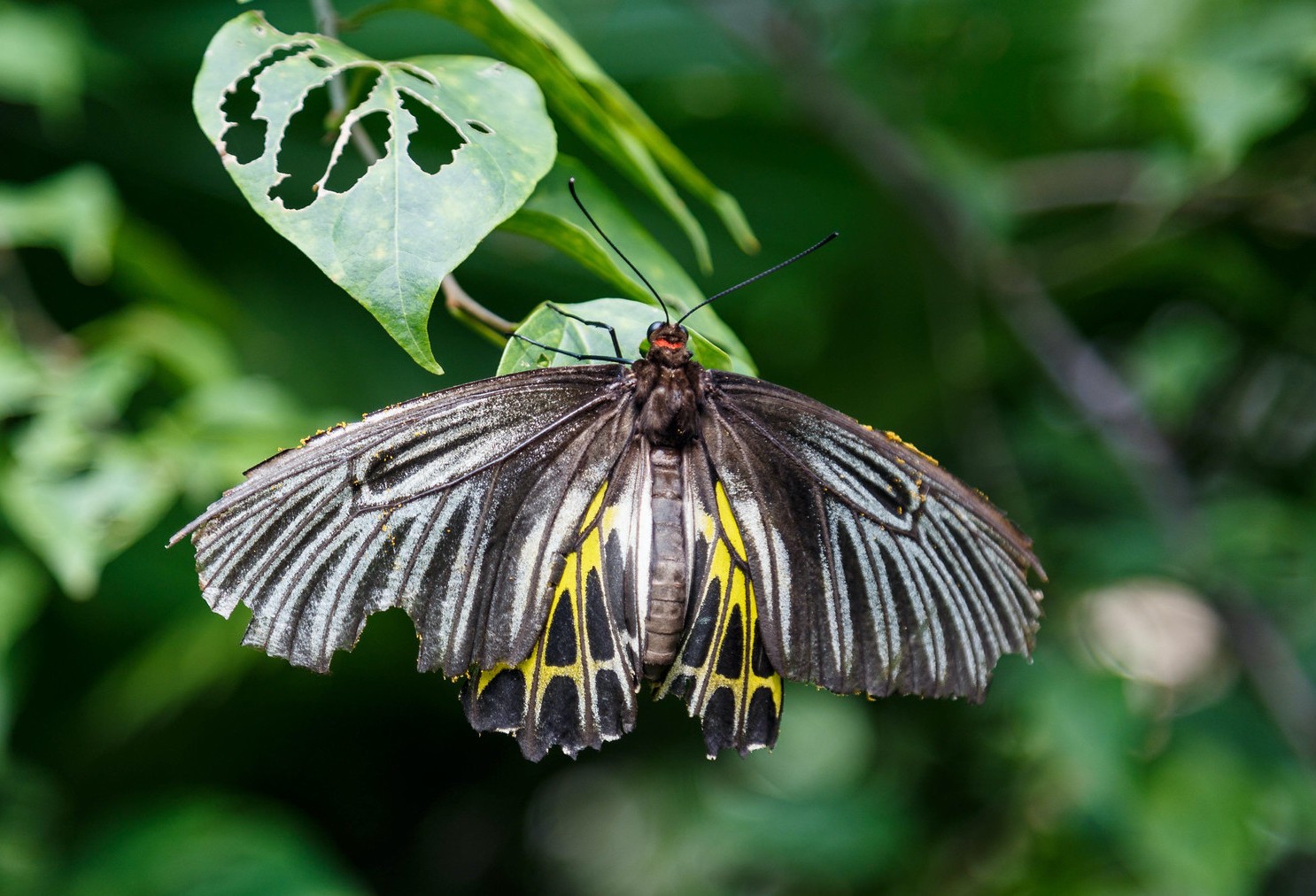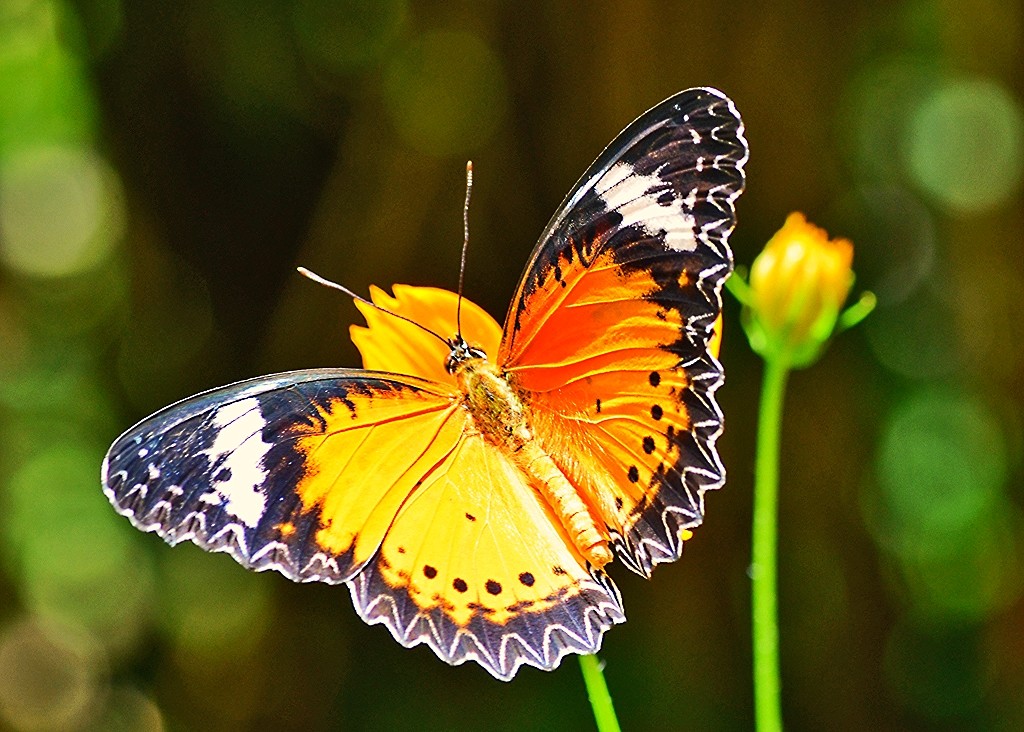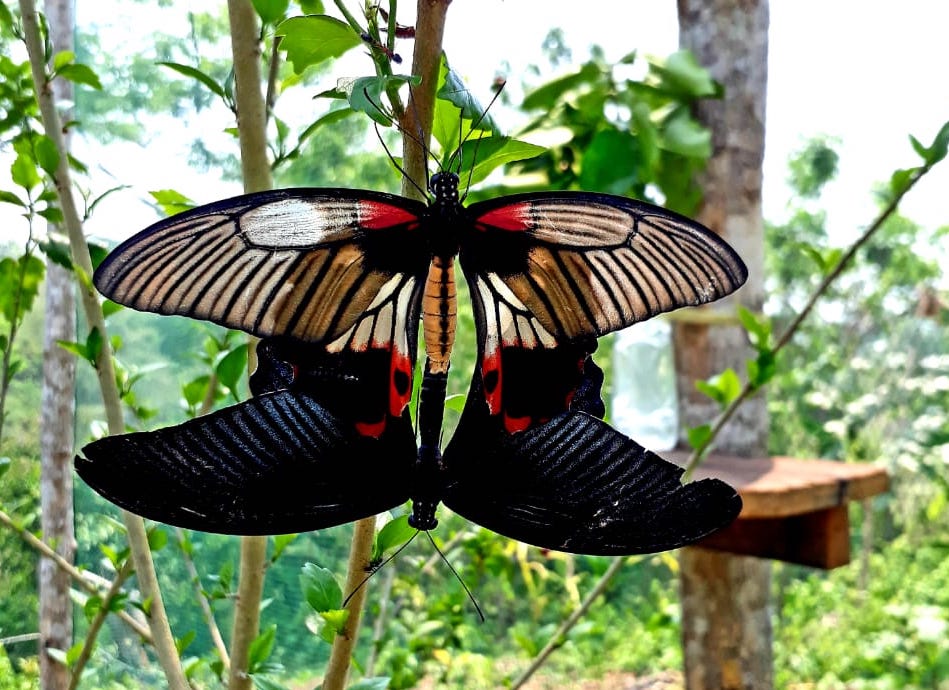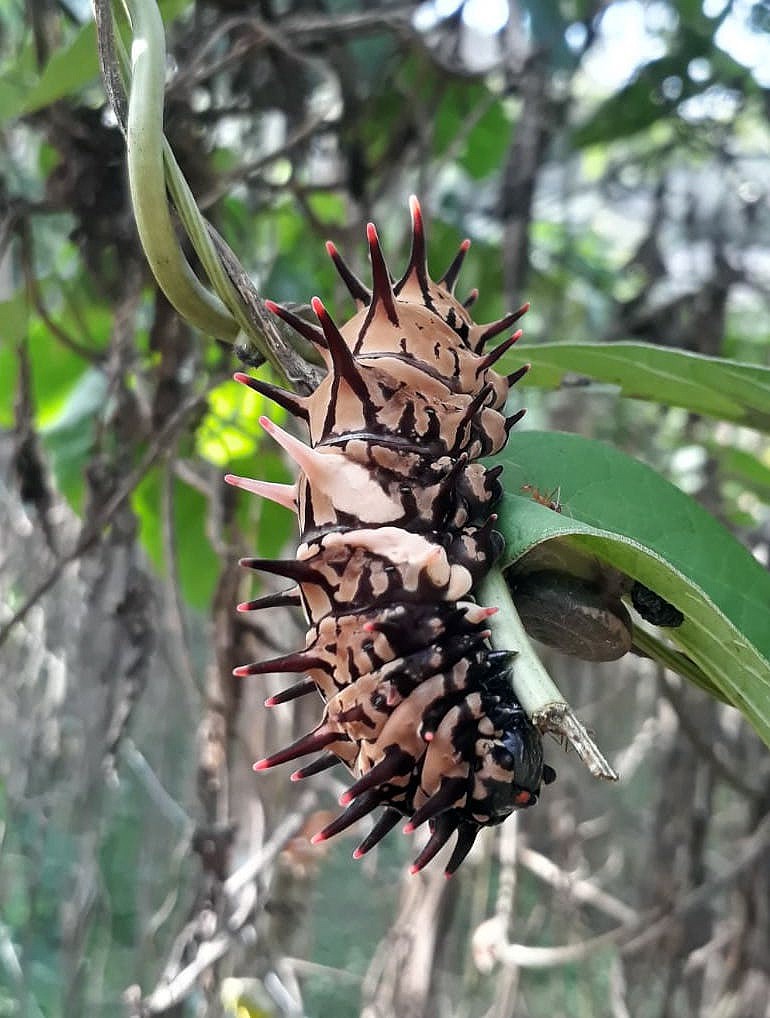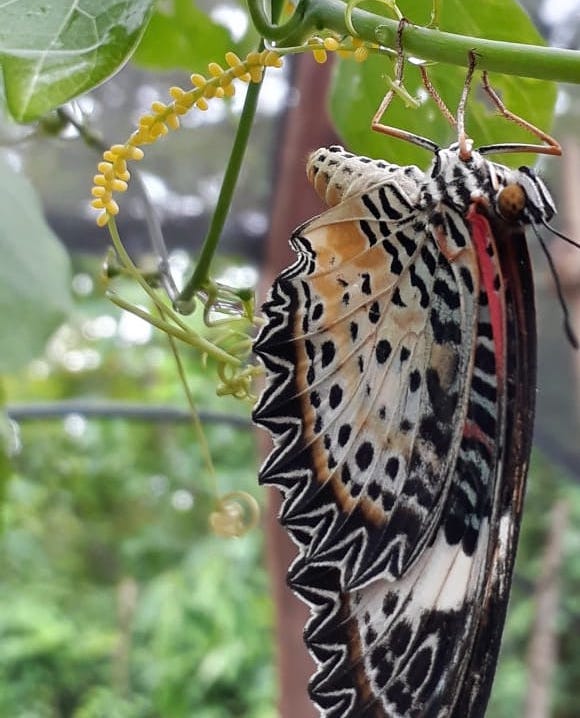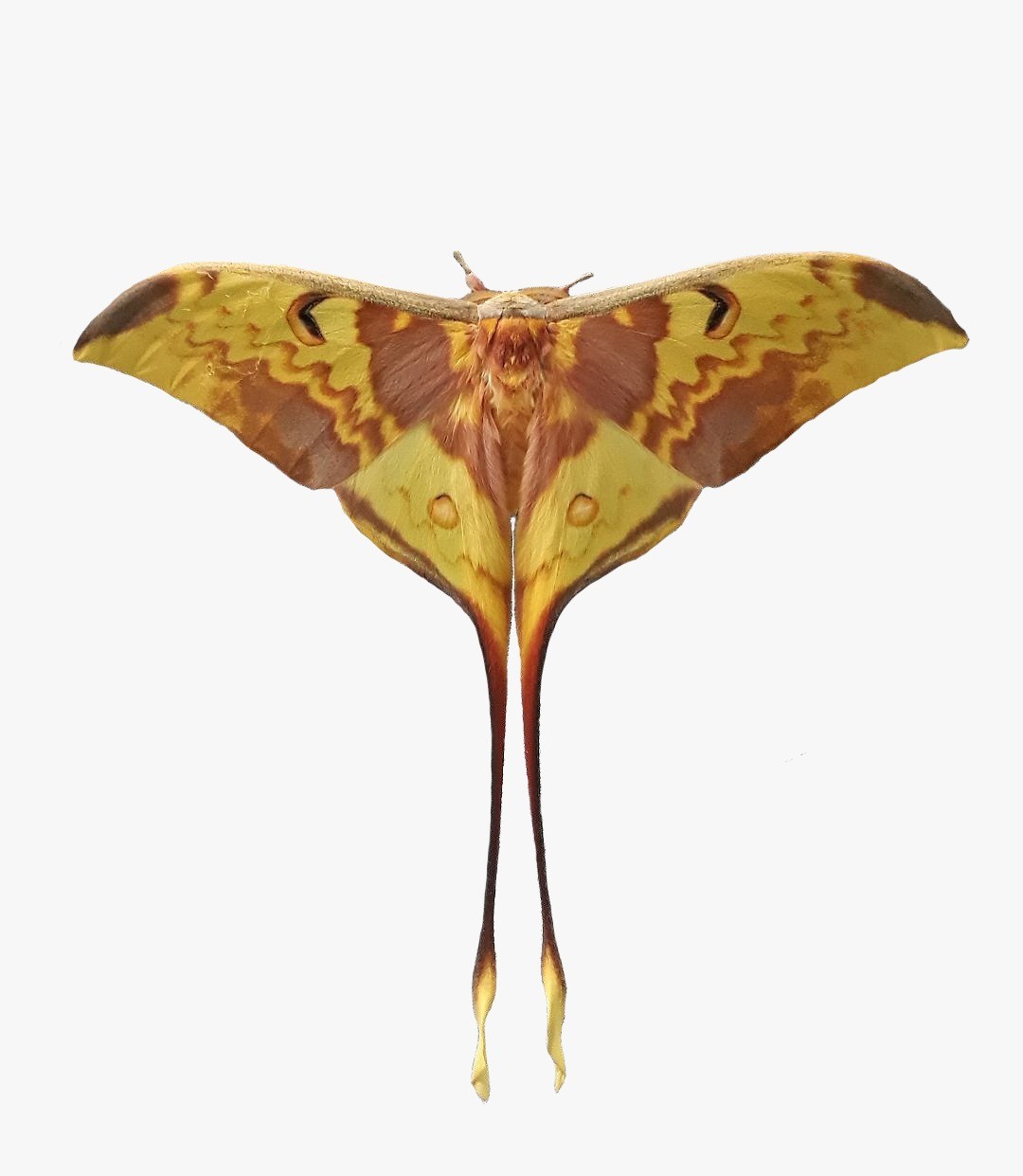Conservation Projects
Global Warming
In these times of dramatic climatic changes Habitat Conservation is more important than ever. Biodiversity is needed to maintain healthy ecological habitats and all species of Flora and Fauna contribute. As plant and animal species are disappearing every year in alarming numbers there are many ways to contribute, and at Pha Tad Ke we concentrate with our limited means on the following:
Ex situ conservation
Ex situ conservation is when you conserve something away from its original/natural environment. This is different from in situ conservation, where conservation is carried out in the original environment. So, if you create a nature reserve around a group groups of trees this is in situ conservation, but if you collect seeds from the trees and grow them in a botanic garden this is ex situ conservation.
Ex situ conservation provides a solution when in situ conservation is not possible. By keeping ex situ collections of rare and endangered species in many different protected places we are helping to ensure the survival of those species. These collections allow conservation organisations to propagate and then reintroduce plants into their native environment if desired. They also provide a “back up” plan if the plant becomes extinct in the wild. The same system is used to conserve animals – think of pandas being kept and bred in various zoos around the world.
In situ plant re-introduction
In our nurseries our efforts are focused on conservation and propagation of Dipterocarp trees, rare gingers, orchids and limestone plants that are on the IUCN endangered species list. We collect these plants on our fieldtrips in the forest to identify them and learn more about these poorly understood species, their distribution and how to propagate them properly. Especially rare and endangered tree species we endeavour to propagate in large numbers to be used for in situ Reintroduction programs in National Protected Areas.
Conservation & agriculture
This might seem like a strange question to some people. What do conservation and agriculture have to do with each other? But once you start exploring the topics their intersection becomes more clear.
The need for food is one we cannot escape – every human being on the planet needs to be fed to survive. All food starts with at least one plant crop in some form. This can be direct, like the vegetables you eat in a salad, or a multi-step process, like the soybeans that are processed into tofu or the grains and grass that feed beef cattle. In order to grow these crops we need land, and as the population of the world grows, and we become more wasteful with our food, we need ever increasing amounts.
Many crops are also grown for non-food products. Toiletries and cosmetics (as well as many other things) use palm oil, construction requires wood and certain plants are used for pharmaceuticals. The list goes on. This too all requires land.
Combined with the need for land for living space and all the other infrastructure related to human settlement you can see that human beings take up a lot of space. Unfortunately this means we need to clear and heavily modify the land to fill these needs. This constant need for more land often puts agricultural objectives in direct conflict with conservation objectives.
Conservation focus is normally on preventing development/use of natural areas and minimising human impact. When agricultural development means jobs, money and a better quality of life it is no surprise that it normally trumps conservation plans.
So, on the face of it agriculture and conservation are indeed enemies. However, it doesn’t have to be this way…
Sustainable agricultural practices that use less land, less resources (like water) and look after the health of the land can aid in conservation. If the correct practices are used then the soil in crop land can remain good and be used year after year, removing the need to clear new land regularly. This is a huge game-changer in many countries where slash and burn is still common.
Agricultural methods that mix different crops, allow spaces and pathways for wildlife, don’t use chemicals that damage the soil and local ecosystems and still provide good yields are ideal. Use of these systems is growing but still accounts for only a small fraction of agricultural land. Good, sustainable agriculture = better, sustainable conservation practices. I cannot overstate the importance of this.
One of the fastest ways to move towards changing to these systems is to vote with your wallet. So, next time you’re buying a product, give some thought to where the materials come from, and choose something that is made with less destruction to the environment. Every little bit helps.
Sustainable permaculture and breeding programs
At Pha Tad Ke we believe that better conservation of forest habitats is fundamental to cope with Global Warming and one of the ways to do so is by providing better education to farmers about sustainable agriculture. With trainings in Permaculture we want to reduce slash and burn and teach about improved soil conditions for better farm yields even in times of changing weather patterns and extended draughts.
Since 2021 we provide trainings on Insect Food Farming as a way to reduce insect foraging in the wild, provide yearlong production of Insects for food in self sustainable breeding cycles to improve nutritional value to the diet of local villagers as well as provide additional revenues from sales.
Want to build your own Bug Hotel ? Here is a simple manual for you to use, courtesy Jon Wells. Read more in his blog here.
- Insect Food Farming training
- Insect Food Farming training
- Staff training in Insect Food Farming
- Delicious Crickets for Lunch ?
- Permaculture in Action – Bug Hotel – Jon Wells hard at work
- Permaculture in Action – Bug Hotel Finished
- Permaculture in Action – Bug Hotel Residents checking in
- Permaculture in Action – Bug Hotel Instructions Manual by Jon Wells
- Permaculture Course – create map
- Permaculture Course – natural fertilizer
- Permaculture Course – nursery maintenance
- Permaculture Course – present group work
- Permaculture Course – soil ph measure
- Permaculture Course – Tree nursery, Khone village
Butterfly Conservation Centre
The Pha Tad Ke butterfly breeding and conservation centre has been operating since 2018 and promotes alternative livelihoods and forest conservation in Laos. The PTK butterfly breeding and conservation Centre is a collaboration with the Banteay Srey Butterfly breeding and conservation centre in Siem Reap, Cambodia.
Butterfly farming is the production of butterfly pupae for sale to local butterfly exhibits or for export to zoos and live exhibitions. Butterfly farms are situated in close proximity to areas of natural forest and provide an alternative, sustainable, income to rural communities.
Butterfly farms have been established in many tropical countries worldwide - including the Philippines, Cambodia, Thailand, Costa Rica, Uganda, Kenya, and Tanzania.
There are many advantages of butterfly farming:
- Pachliopta aristolochiae goniopeltis (Common rose) ©Banteay Srei Butterfly Centre
- Pachliopta aristolochiae goniopeltis (Common rose) ©Banteay Srei Butterfly Centre
- Asian Monarch Butterfly ©Banteay Srei Butterfly Centre
- Troides aeacus aeacus (Golden birdwing) ©Banteay Srei Butterfly Centre
- Leopard Lacewing ©Banteay Srei Butterfly Centre
- Papilio memnon (great mormon) © pha tad ke
- Troides aeacus aeacus (Caterpillar) © Pha Tad Ke
- Cethosia cyane euanthes (Leopard lacewing) © pha-tad-ke
- Actias meanas (Malaysian moon moth) © Pha Tad Ke



